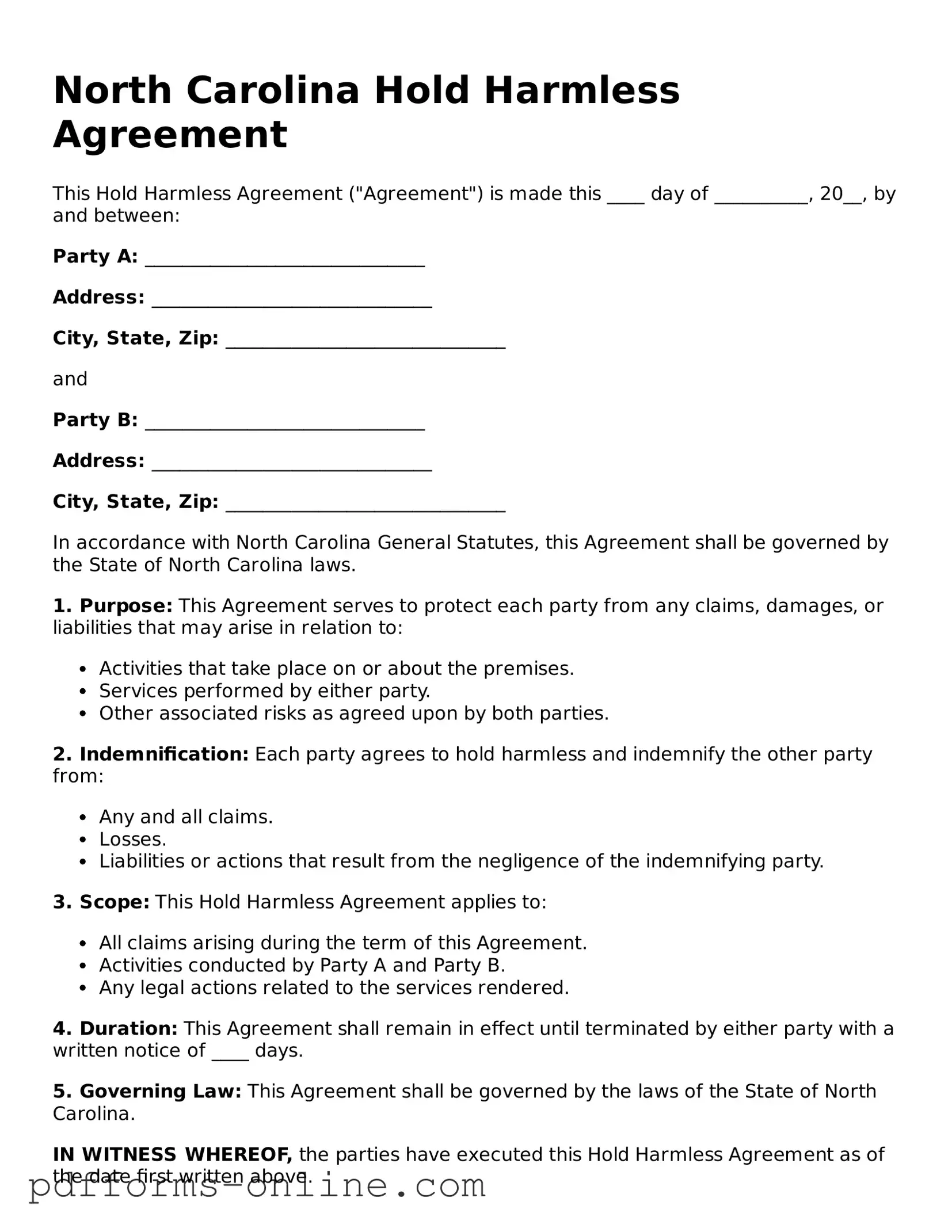North Carolina Hold Harmless Agreement
This Hold Harmless Agreement ("Agreement") is made this ____ day of __________, 20__, by and between:
Party A: ______________________________
Address: ______________________________
City, State, Zip: ______________________________
and
Party B: ______________________________
Address: ______________________________
City, State, Zip: ______________________________
In accordance with North Carolina General Statutes, this Agreement shall be governed by the State of North Carolina laws.
1. Purpose: This Agreement serves to protect each party from any claims, damages, or liabilities that may arise in relation to:
- Activities that take place on or about the premises.
- Services performed by either party.
- Other associated risks as agreed upon by both parties.
2. Indemnification: Each party agrees to hold harmless and indemnify the other party from:
- Any and all claims.
- Losses.
- Liabilities or actions that result from the negligence of the indemnifying party.
3. Scope: This Hold Harmless Agreement applies to:
- All claims arising during the term of this Agreement.
- Activities conducted by Party A and Party B.
- Any legal actions related to the services rendered.
4. Duration: This Agreement shall remain in effect until terminated by either party with a written notice of ____ days.
5. Governing Law: This Agreement shall be governed by the laws of the State of North Carolina.
IN WITNESS WHEREOF, the parties have executed this Hold Harmless Agreement as of the date first written above.
Party A Signature: ______________________________ Date: ____________
Party B Signature: ______________________________ Date: ____________
